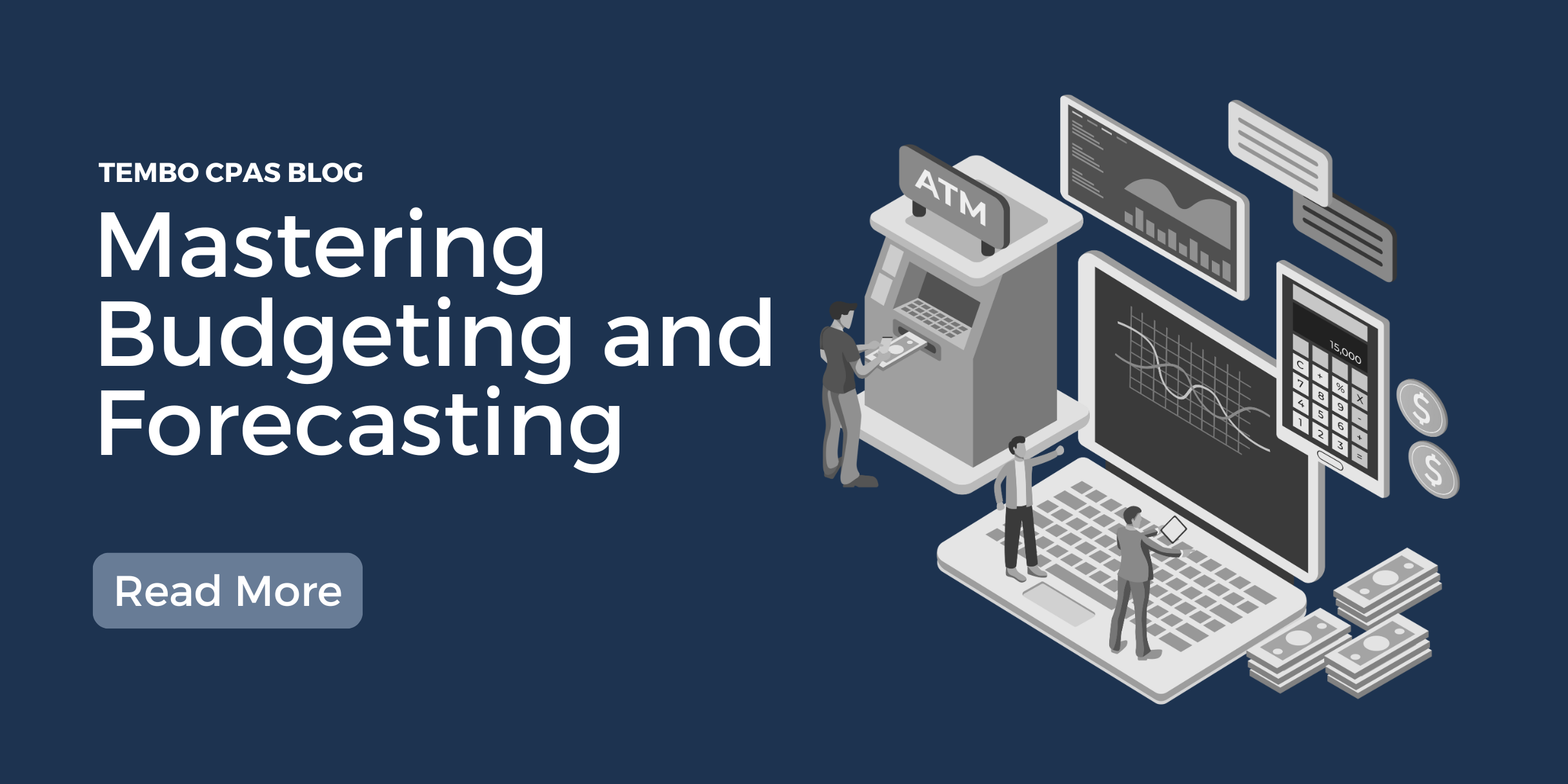Mastering Budgeting and Forecasting: Essential Strategies for Entrepreneurs
Tembo CPAs the firm for entrepreneurs.
As a seasoned entrepreneur, you recognize that successful navigation of the financial landscape demands more than just intuition. A robust budgeting and forecasting process is critical, serving as both a guiding roadmap and a performance measurement tool. Here’s an in-depth look at how to master these essential financial strategies to drive growth, profitability, and long-term success.
1. Understand the Importance of Budgeting
A well-crafted budget is more than a mere financial document; it’s your strategic blueprint. It helps allocate resources effectively, guiding decisions and actions throughout the year. A comprehensive budget should reflect not only your financial goals but also your operational needs and market realities. This alignment ensures that every financial decision is informed by a broader strategic context.
2. Create a Detailed Budget
To create a detailed budget, begin with a thorough analysis of your income and expenses. Break down your budget into specific categories:
- Fixed Costs: These are non-negotiable expenses like rent, salaries, and insurance that remain constant regardless of business performance.
- Variable Costs: Costs that fluctuate with business activity, including marketing, supplies, and utilities, require close monitoring to optimize spending.
- Discretionary Spending: Allocate funds for travel, training, and professional development, but do so judiciously to maintain flexibility in your budget.
- Utilizing accounting software or tools like Excel can help organize and streamline this data. Ensure that your budget allows for easy updates and adjustments, reflecting real-time changes in your business environment.
3. Use Historical Data for Forecasting
- Effective forecasting hinges on analyzing historical performance. Dive deep into past sales data, considering factors such as seasonality and market conditions to project future revenue accurately. Employ methods like regression analysis to identify patterns and correlations. Developing different scenarios—best-case, worst-case, and most likely—will prepare you for potential fluctuations, allowing you to make informed strategic decisions.
4. Implement Rolling Forecasts
- Transition from static annual forecasts to a rolling forecast model. This dynamic approach enables you to revise financial projections regularly—monthly or quarterly—based on the latest data and emerging business trends. By doing so, you can remain agile and better aligned with your strategic objectives, ensuring that your financial plans adapt to the ever-evolving market landscape.
5. Set Realistic Financial Goals
- Your budgeting and forecasting efforts should be anchored in clear, measurable goals. Whether your objectives include revenue growth, cost reduction, or improved profitability, specificity is key. Break down larger goals into smaller, actionable steps, allowing for regular tracking and adjustments. This clarity ensures that your team remains focused and aligned on shared objectives.
6. Monitor Key Performance Indicators (KPIs)
- Establish relevant KPIs that reflect your business’s health and operational performance. Key metrics for budgeting and forecasting include:
- Gross Profit Margin: Indicates how efficiently your business uses its resources to produce goods.
- Operating Expenses Ratio: Measures the percentage of revenue consumed by operational costs, helping identify areas for improvement.
- Net Profit Margin: Reflects overall profitability and can guide pricing strategies.
- Cash Flow from Operations: Vital for understanding liquidity and operational efficiency.
- Regularly reviewing these metrics will enable you to identify trends, uncover potential issues, and make timely adjustments to your budget.
7. Involve Your Team
- Engagement is critical in the budgeting process. Involve your team and collaborate with department heads to gather insights from various perspectives. This inclusive approach can uncover potential cost-saving opportunities and align departmental goals with the overarching business objectives. Encouraging input fosters a culture of ownership and accountability, making the budgeting process more effective.
8. Prepare for Uncertainties
- The business environment is inherently unpredictable. Build flexibility into your budget to accommodate unexpected expenses or market shifts. Consider establishing contingency funds or reserves that can be accessed during challenging times. This proactive stance not only protects your business but also positions you to seize new opportunities as they arise.
9. Use Technology for Efficiency
- Leverage financial technology to enhance your budgeting and forecasting processes. Tools like QuickBooks, Planful, or Adaptive Insights can automate data collection and reporting, freeing up valuable time for strategic analysis. By integrating these tools into your workflow, you can improve accuracy and efficiency, enabling more informed decision-making.
10. Review and Revise Regularly
- Budgeting and forecasting are ongoing processes, not one-time tasks. Schedule regular reviews—monthly or quarterly—to assess performance against your budget. Use these sessions to identify variances, analyze their causes, and adjust your forecasts accordingly. This iterative process keeps your financial strategy aligned with your business’s goals and the external environment.
- Mastering budgeting and forecasting is essential for entrepreneurs who aim to enhance profitability and ensure sustainable growth. By implementing these strategies, you can create a financial roadmap that guides your decisions and prepares you for future challenges.
- If you need personalized assistance in developing a tailored budgeting and forecasting strategy, contact Tembo CPAs today. Our expertise can help you navigate your financial landscape with confidence, empowering you to achieve your business goals.






